Like I mentioned before, I believe ordinary oil-based ink is not toxic on its own; it is the use of hydrocarbon solvents that makes cleaning up so toxic. While I have done a fair amount of research into make ink more easily removed with waterbased solutions, I have realized these modifiers made the ink more prone to tinting in some cases. Now I generally use none or little of the waterbased ink I had purchased. I still use modifiers, but these would commonly be removed with hydrocarbons. To give the waterbased solutions a chance to do their stuff, it is important to remove most of the ink from rollers, slabs and tools. I have developed a technique that allows me to quickly get everything ship-shape for the next printing session.
When I started printing at the universities print department, hydrocarbon solvent was ordered by 45 gallons drums to cleanup slabs and rubber rollers, which combined with the solvent based screenprinting in the department, made the place extremely toxic. As I got more involved with the department, I realized something had to be done for students and my self to keep healthy.
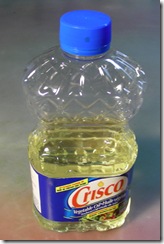 I introduced the use of common vegetable oil for remove the ink, then strong soap for remove the mess. While it worked, it was two step and students would go for the solvent container when I was not around. Straight vegetable oil is not that effective in cutting the thick ink, so using it was a bother for students. About that time the university was getting concerned with use of solvents and a study was done on the rate of air exchange that would be needed to keep the studio completely solvent free. It would require a complete exchange every six minutes, which in our cold winter climate made it very expensive to heat the space. I introduced my wallpaper paste ink for screenprinting and started to research other media as well.
I introduced the use of common vegetable oil for remove the ink, then strong soap for remove the mess. While it worked, it was two step and students would go for the solvent container when I was not around. Straight vegetable oil is not that effective in cutting the thick ink, so using it was a bother for students. About that time the university was getting concerned with use of solvents and a study was done on the rate of air exchange that would be needed to keep the studio completely solvent free. It would require a complete exchange every six minutes, which in our cold winter climate made it very expensive to heat the space. I introduced my wallpaper paste ink for screenprinting and started to research other media as well.
To replace salad oil cleanup, I looked at the more powerful commercial and household cleaning materials but they by themselves were not very effective at cutting into the oily ink surfaces.
 Amongst cleaners in North America is PineSol, that smells of pine oil, which also acts as a disinfectant as well as solvent. I found that by adding about 25-30% turpentine, it would remove thin layers of ink and the remaining film could be easily removed with water. The quantity needed mixed for the student use would separate overnight, so an effective emulsifier was needed. Again the grocery store supplied a detergent by way of an old standby - green Palmolive Original dishwasher liquid. I chose it because of a TV commercial where a lady is soaking her fingers in a bowl at a beauticians, who tells her the liquid is Palmolive. If it was safe for the ladies fingers, it can’t be very toxic. It turned out to be the best I have found so far. To get complete emulsification, a bit of the Palmolive is added to the PineSol mixture and shaken. If it doesn’t turn completely clear green, add more and shake again. This will keep clear for ages and never separate in any way. Some of the newer dishwasher liquids are not as effective as the Palmolive, but I have tried only a few - giving the rejects to my wife.
Amongst cleaners in North America is PineSol, that smells of pine oil, which also acts as a disinfectant as well as solvent. I found that by adding about 25-30% turpentine, it would remove thin layers of ink and the remaining film could be easily removed with water. The quantity needed mixed for the student use would separate overnight, so an effective emulsifier was needed. Again the grocery store supplied a detergent by way of an old standby - green Palmolive Original dishwasher liquid. I chose it because of a TV commercial where a lady is soaking her fingers in a bowl at a beauticians, who tells her the liquid is Palmolive. If it was safe for the ladies fingers, it can’t be very toxic. It turned out to be the best I have found so far. To get complete emulsification, a bit of the Palmolive is added to the PineSol mixture and shaken. If it doesn’t turn completely clear green, add more and shake again. This will keep clear for ages and never separate in any way. Some of the newer dishwasher liquids are not as effective as the Palmolive, but I have tried only a few - giving the rejects to my wife.
In my travel to Hong Kong and Japan, I had to find local products that would work just as well, but was lucky in both countries as grocery stores had suitable strong detergents. I believe I didn’t have to mix up solvents and emulsifiers as these cleaning agent were efficient enough on their own. This is probably true for all countries as cleaning is a necessary part of daily living. So check your grocery store first, then try industrial suppliers for their cleaning products.
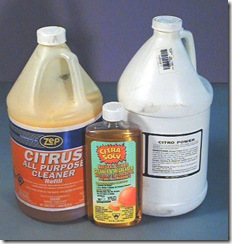 Over the years I have managed to find a number of industrial/agricultural detergents that work very well in much the same way as the PineSol product. While some artists insist that turpentine is extremely toxic, I find it the best to cut into ink and not that much is added to make it a hazard in a ventilated studio. We have used artists turpentine when painting and have not worried too about the odour when released in larger amounts. The next effective hydrocarbon is common paint thinner, then the least effective is the odourless paint thinner used to dilute silicone. The secret is to add more hydrocarbon solvent to dissolve ink and an emulsifier to keep it well mixed.
Over the years I have managed to find a number of industrial/agricultural detergents that work very well in much the same way as the PineSol product. While some artists insist that turpentine is extremely toxic, I find it the best to cut into ink and not that much is added to make it a hazard in a ventilated studio. We have used artists turpentine when painting and have not worried too about the odour when released in larger amounts. The next effective hydrocarbon is common paint thinner, then the least effective is the odourless paint thinner used to dilute silicone. The secret is to add more hydrocarbon solvent to dissolve ink and an emulsifier to keep it well mixed.
There have come on the market a number of vegetable based compounds for cleaning ink, in North America there is SOYsolv. I have not had a chance to try it, but it seems to be similar to VCA in some ways. Vegetable Cleaning Agent was developed in Europe I believe and used there in industrial establishments and print shops. It has been hard to find here and quite expensive, until we found a source of Bio-diesel used for motor vehicles and is basically the same material. It is oily and must to removed, after it dissolves the ink, with soap or detergents. I had started to make my own Bio-diesel from Canola oil, which is abundant in this area, from instructions on the Internet. Since I am not concerned with any residue left in the oil after a chemical reaction and separation, it becomes easier to make than for a motor. I was sent some VCA from Europe and have two commercial Bio-diesel products as well. While I do use one of these materials sometimes, I find the need for getting out the soap or detergent bothersome and stick to the waterbased mixtures.
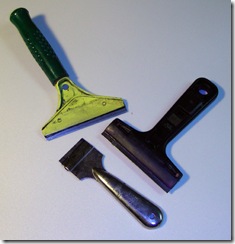 To remove most of the ink on the slab, use a wide sharp scraper to leave less material on the slab, then go over the slab again with the roller to remove more of its’ ink and repeat the actions until as much ink is removed as possible. There are rolls of wet-strength paper used by various professions and try to find one wide enough to accommodate the width of your roller. Put a torn off piece on the slab over the ink area and pour out some waterbased cleaner, then roll over it until the ink is off the rubber.
To remove most of the ink on the slab, use a wide sharp scraper to leave less material on the slab, then go over the slab again with the roller to remove more of its’ ink and repeat the actions until as much ink is removed as possible. There are rolls of wet-strength paper used by various professions and try to find one wide enough to accommodate the width of your roller. Put a torn off piece on the slab over the ink area and pour out some waterbased cleaner, then roll over it until the ink is off the rubber.
Using Nitrile gloves, pick up the paper and rub the roller to loosen any stubborn ink, using the sheet to go over the slab, spatulas and scraper. A container of water and a cloth is used to attack the roller while it is moved over the slab to loosen all the ink. The roller is then passed over a sheet of newsprint on the pressbed or other flat surface to remove most of the water. A dry cloth removes the rest.
Copyrighted Nik Semenoff 2008

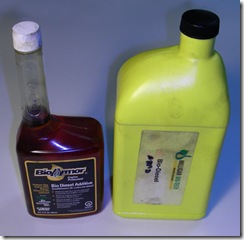
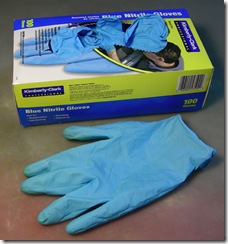
click here to read
#8 Waterbased Cleanup | New Directions in Printmaking